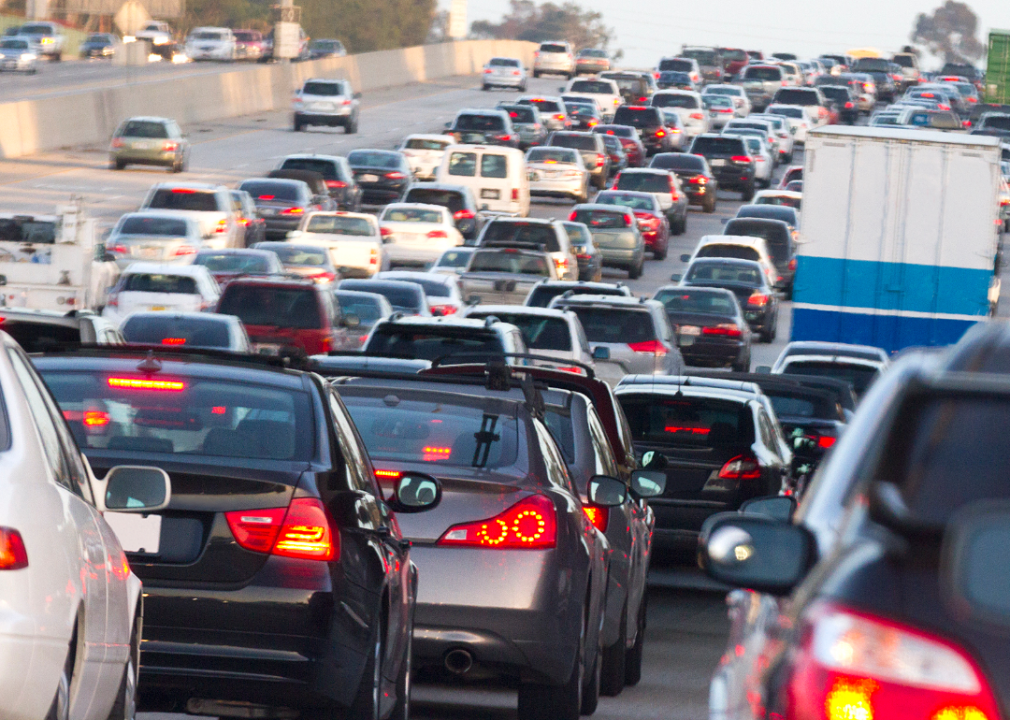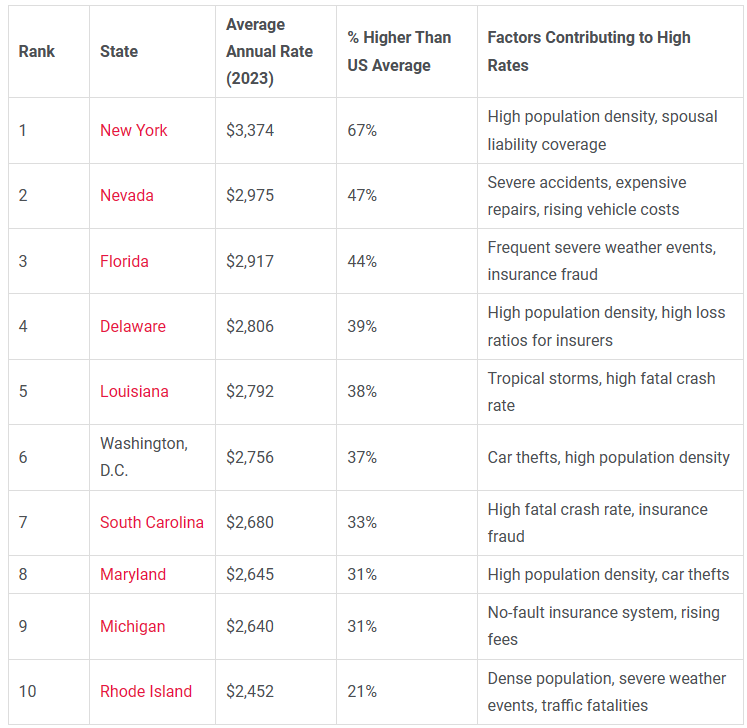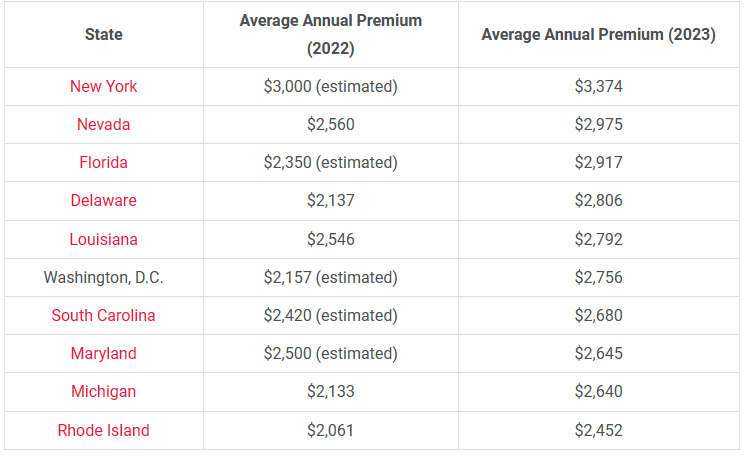
Do you want the bad news or the worst news first? Way.com is not cruel and will gently let you know the truth.
Okay, the bad news first. The price of everything from groceries to furniture is going up. The worst news? Insuring your car to navigate this economic apocalypse just got significantly more expensive.
Full coverage costs $212 a month on average, while liability-only coverage costs $103 a month. That prices out to $2541 and $1238 a year, respectively. In 2023, the average price of full-coverage car insurance across the country went up by 24%.
The cost of car insurance depends on many things. These include the type of vehicle you drive, your driving record, and, in many places, your credit score.
The place where you live also has a big impact on your rate, especially in states like Michigan, Connecticut, and Florida. But rates for all types of car insurance are going up at an alarming rate. This is mostly because of things like the cost of auto parts and the effects of climate change.
According to the Bureau of Labor Statistics, auto insurance premiums in 2024 have increased by a whopping 20.6% year-over-year. That's right, your car insurance is now more expensive than that regrettable avocado toast you splurged on last week.
This was the biggest increase since December 1976, when rates went up 22.4% from the previous year.
According to the BLS, the cost of car insurance went up 17.4% each year in 2023. This was the biggest annual increase since 1976, when it went up 28.7%.
A rise in accidents, type of accidents, and location – factors all working together to make costs go up – are combining to give many American drivers insurance sticker shock.
A lot of people stayed home during the height of the pandemic, but the number of deaths on the roads rose by 10.5% in 2021, reaching their highest level since 2005. The NHTSA said it was the biggest rise in deaths it had ever seen. The number of deaths didn't go down much from 2021 to 2022.

From population density to car thefts, take a look at the reasons why rates are the highest in these states.

If you are living in one of the states above, you can compare and see how much auto insurance premiums increased in 2023.
After a turbulent year, auto insurance premiums are now stabilizing, with less substantial increases anticipated in the coming months.
Insurers endured high loss ratios for the majority of 2023, which will likely be reflected in additional rate hikes. This is primarily attributable to the soaring cost of auto parts and the growing volume and severity of claims.
The insurance industry persisted under the strain of inflationary pressures, labor shortages, and supply chain deceleration, which originated during the COVID-19 pandemic into 2023. However, losses for personal auto insurers have decelerated as the impact of rate increases begins to outweigh loss trends. As a result, drivers may anticipate a degree of industry stabilization in the latter part of 2024.
Since 2022, the consumer price index for car maintenance and repair from the Bureau of Labor Statistics has experienced significant double-digit increases. Higher expenses incurred at the auto shop are transferred to insurers, who then adjust their rates to accommodate the rising costs of claims.
Insurers are also bearing the costs of increasingly frequent and severe accidents. According to the National Highway Traffic Safety Administration (NHTSA), there was a significant increase in traffic fatalities during the COVID-19 shutdowns. In 2020, the number of fatalities rose by 7.3%, and in 2021, it increased by 10.1%.
With the rise of advanced automotive technology, the cost and complexity of car repairs have also increased. The cost of replacing a windshield can be quite high, especially in vehicles equipped with advanced features like rain-sensing wipers, driver assistance systems, and adaptive cruise control. The cost of replacing a windshield on older vehicles typically ranges from $300 to $600.
Electric vehicles (EVs) do have higher repair costs. In certain models, Tesla has ingeniously integrated batteries as a structural component of their cars rather than a mere replaceable part. This strategic move has allowed Tesla, the leading manufacturer of electric vehicles in the U.S., to solidify its position in the market. If a minor accident occurs, it may be necessary to replace the entire battery, which can result in a significant expense ranging from $5,000 to $20,000 for the replacement part.
In a January 2023 investor call, Tesla CEO Elon Musk unveiled his intentions to revamp the design and reduce the expenses associated with repairing a Tesla after a collision. In 2019, the company also introduced Tesla Insurance, providing customers with the opportunity to secure more affordable rates compared to conventional insurance providers.
Nevertheless, numerous Tesla Insurance policyholders have expressed frustration over extended wait times for compensation. The automaker is also dealing with class-action lawsuits that claim Tesla sensors generate inaccurate collision warnings, leading to higher insurance premiums.
The auto manufacturing industry is facing significant challenges due to supply chain disruptions and labor shortages caused by the COVID-19 pandemic. As a result, there is a decline in inventory and a noticeable increase in prices for new vehicles. According to Kelley Blue Book, the average transaction price for new cars has increased by about 23% since November 2020, now reaching over $48,000.
On the other hand, the prices of new vehicles have remained steady from one year to the next, thanks to the favorable market conditions for car buyers. Used vehicle prices also experienced a significant increase but have since decreased by 3% since October 2023, with an average list price of $26,533, according to KBB data. However, the inventory of used vehicles, particularly the ones that are most affordable, continues to be limited.
Weather events are increasingly impacting insurer losses. During the first half of 2023, the U.S. experienced significant losses due to severe convective storms, resulting in insured damages amounting to a minimum of $29 billion].
In 2023, there were insurance industry crises in several states that are particularly vulnerable to climate catastrophes, such as Florida, California, and Louisiana. In 2023, the United States witnessed a total of 25 weather or climate disaster events that resulted in losses surpassing $1 billion each, as per the latest data from the National Oceanic and Atmospheric Administration (NOAA) as of Dec. 8.
Due to the expensive claims related to climate change, major insurers are reducing coverage, not renewing policies, and stopping the sale of new homes and auto policies in high-risk areas. With the rise in the frequency of severe weather events, policyholders may experience a decrease in coverage options, potentially leading to higher rates.
A significant majority of drivers experienced multiple premium increases in 2023, resulting in a substantial rise in the average annual rate for full coverage to $2,019. Several factors came together to cause a significant increase in rates, such as escalating repair costs, shortages in labor, higher prices for vehicles, and climate disasters.
In the future, car insurance pricing may be influenced by severe weather events and the expensive repairs associated with high-tech and electric vehicles.
It is projected that car insurance rates will experience a further increase in 2024. If you're looking to reduce your car insurance expenses in 2024, there are several choices available. These include raising your deductibles, lowering your coverage limits, and obtaining quotes from multiple insurers to secure a more favorable rate.
Policyholders may inquire with their insurance companies to see if they are eligible for any potential discounts. Typical discounts encompass savings for vehicle safety features, defensive driving courses, combining home and auto insurance, and establishing automatic payments.
This story was produced by Way.com and reviewed and distributed by Stacker Media.